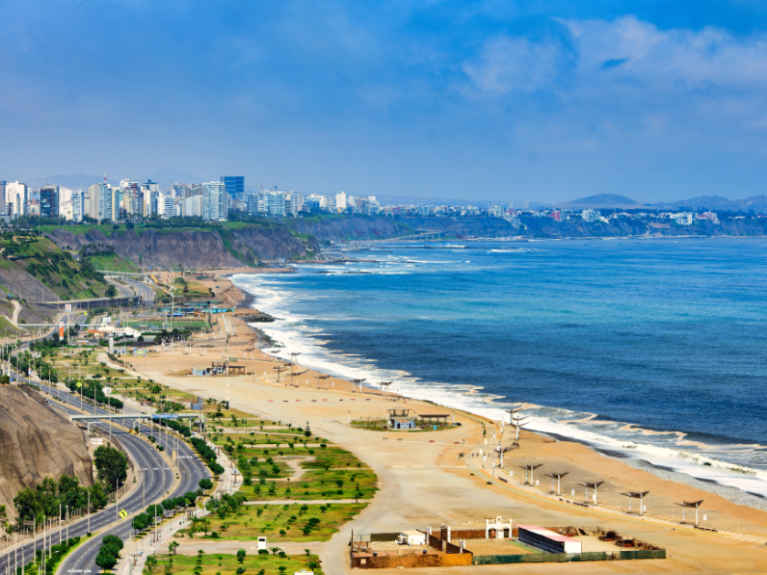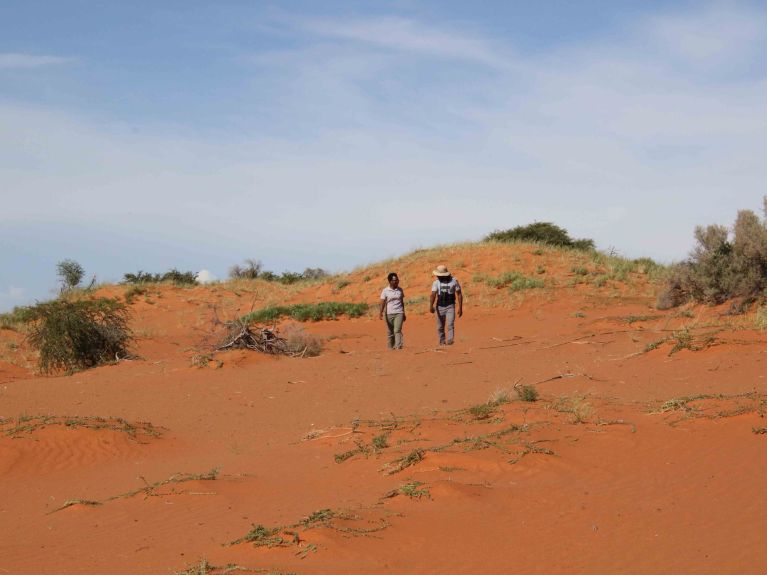Solutions to water scarcity
From Inca canals to drones over the Kalahari: in Peru and southern Africa, projects are showing how a secure water supply can be achieved in original ways.

Peru: supplying water to cities
Peru’s capital Lima lies on the Pacific and is traversed by the Río Rímac yet it counts as one of the driest megacities in the world. The German development agency GIZ is working to change this – and has already achieved some early success. Together with Peruvian partners and the international environmental organisation The Nature Conservancy, the GIZ has restored stone canals dating back to the Inca era. These channels divert mountain water from the Andes to Lima and the surrounding region: in total, they channel more than three million cubic metres of additional water into the groundwater network each year. But the GIZ is not only focusing on the capital. A project running until 2028 is boosting the reliability and climate resilience of water supply systems in several cities across the country, for instance through early warning systems and the reuse of treated wastewater in agriculture.
Kalahari: cooperation in southern Africa

When people think of the Kalahari, they picture desert sand and arid savannahs. But the German–African cooperation project “SeeKaquA” aims to improve water supply in the long term by tapping deep groundwater reserves, with test sites in Namibia and Zambia. In order to identify water sources of this type in the Kalahari Basin, SeeKaquA uses a drone-based electromagnetic measuring system. This allows the underground to be examined in an environment-friendly way so as to determine suitable locations for possible well drilling. “The focus here is on the transfer of knowledge and technology,” says Roland Bäumle of the Federal Institute for Geosciences and Natural Resources (BGR). “We believe this project has the potential to promote the development of groundwater supply in southern Africa beyond the scope of the project itself.”


